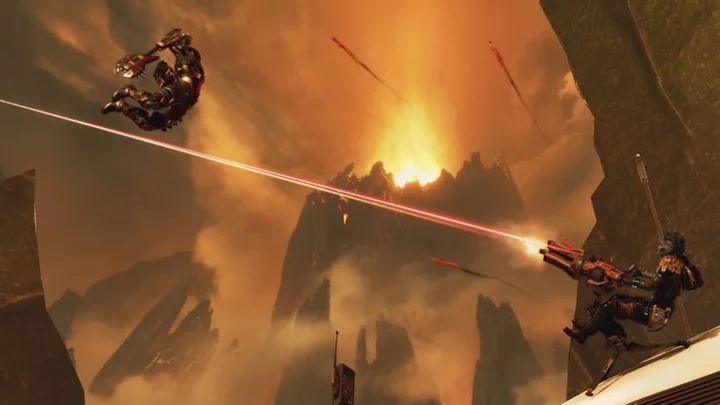An Indian spacecraft has just sent home pristine close-up views of the moon, showing off a vast landscape of craters to rival any Swiss cheese wheel.
For the past three days, Chandrayaan-3 has been in lunar orbit, soaring about 100 miles above the moon's surface in space at closest approach. It's a tranquil, celebratory moment for the mission before the rubber meets the road — or, rather, before the robot meets the regolith.
You can watch a video of the spacecraft's first glimpse of the moon in the tweet below. As the mission progresses, the Indian Space Research Organization will move the crewless spacecraft closer to the lunar south pole, its ultimate destination.
SEE ALSO: Daring private moon lander ran out of fuel before crashIndia is no stranger to getting a spacecraft into lunar orbit — this is its third time doing so successfully. But its next big challenge will be sticking a landing, something the space agency has yet to achieve. The mission follows India's Chandrayaan-2, which ended abruptly when the spacecraft crashed during its landing attempt in 2019.
The team will get its next crack at a moon landing later this month on Aug. 23. If India succeeds, it will become only the fourth nation to accomplish this monumental feat, joining the ranks of the former Soviet Union, the United States, and China.
Over the past four years, the private sector and other spacefaring nations have tried and failed to land on the moon with crewless spacecraft. An Israeli nonprofit and company collaborated in 2019 on the Beresheet mission, which crashed on the lunar surface after an orientation component failed. Just this April, a Japanese startup, ispace, ran out of fuel as it tried to land. Fuel is crucial for firing thrusters to slow down during the descent.
Want more science and tech news delivered straight to your inbox? Sign up for Mashable's Light Speed newsletter today.
Though 60 years have passed since the first uncrewed moon landings, touching down safely remains a daunting task, with less than half of all missions succeeding. Unlike around Earth, the moon's atmosphere is very thin, providing virtually no drag to slow a spacecraft down as it approaches the ground. Furthermore, there are no GPS systems on the moon to help guide a craft to its landing spot. Engineers have to compensate for these shortcomings from 239,000 miles away.
But this year marks the beginning of a renewed race to the moon, spurred in part by NASA's Commercial Lunar Payload Services Program established in 2018. These upcoming missions will support the U.S. space agency's lunar ambitions, with NASA planning to send astronauts back to the surface in 2025 or later. While NASA has set its sights on using the moon as a training ground for a future human mission to Mars, the commercial program's goal is to kickstart a "cislunar economy" of business ventures on and around the moon.
If India succeeds, it will become only the fourth nation to accomplish a moon landing, joining the ranks of the former Soviet Union, the United States, and China. Credit: ISROISRO plans to use a rover similar to the one used during its previous failed mission but with improvements. After conducting some maneuvers in space, the propulsion module will separate from the lander. Then, the vehicle will hit the brakes in several complex maneuvers to avoid crashing into the ground.
A lot needs to happen before that can take place. So, for now, enjoy this serene roll past the moon.









